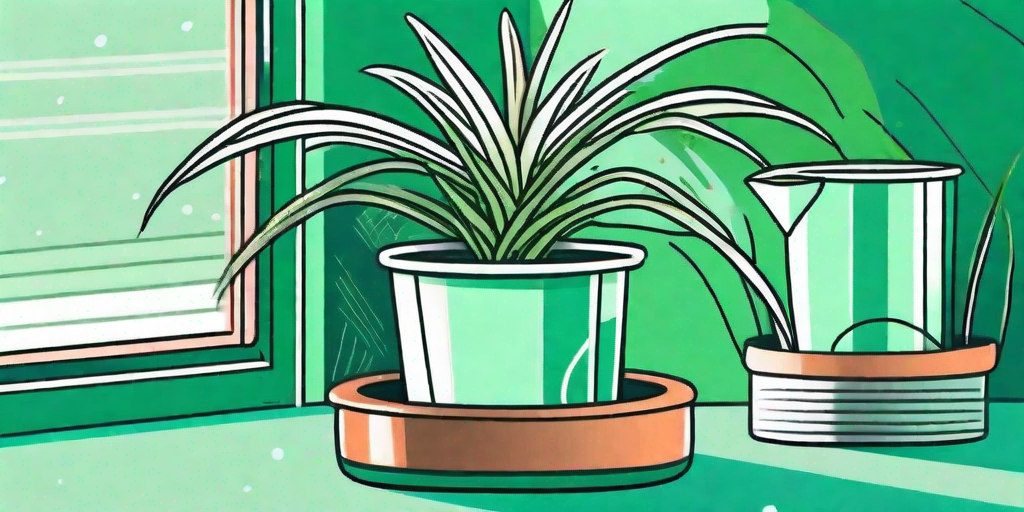
Welcome to the world of Spider Plants! These charming, resilient houseplants are a favorite among beginners and experienced gardeners alike. But, just like us, they need a little TLC (Tender Leafy Care) to truly thrive. Today, we'll delve into the fascinating world of fertilizing these eight-legged leafy wonders. Buckle up, plant parents, it's time to get our hands dirty!
Understanding Your Spider Plant
Before we dive into the nitty-gritty of fertilization, let's take a moment to understand our green friend. The Spider Plant, or Chlorophytum comosum, is a native of tropical and southern Africa. It's known for its long, arching leaves and spider-like plantlets. But don't worry, unlike its namesake, it's completely harmless and doesn't spin webs.
Spider Plants are hardy and adaptable, making them perfect for those of us who weren't exactly born with a green thumb. They're tolerant of a wide range of conditions, but they do have some specific needs when it comes to nutrition. That's where fertilization comes in.
The Science of Fertilization
Now, don't panic. We're not about to launch into a full-blown chemistry lesson. But a basic understanding of plant nutrition will help you become the best plant parent you can be. Plants need a mix of macronutrients (nitrogen, phosphorus, and potassium) and micronutrients (like iron, zinc, and copper) to grow and thrive.
Think of it like a balanced diet for your plant. Too much of one nutrient can be just as harmful as too little. The trick is finding the right balance. And that's where we come in.
Choosing the Right Fertilizer
When it comes to fertilizers, there's a bewildering array of choices. But don't worry, we're here to guide you through the maze. The first thing to look for is a balanced fertilizer. This means it contains equal amounts of nitrogen, phosphorus, and potassium (often referred to as N-P-K).
Spider Plants also benefit from a dose of micronutrients, so look for a fertilizer that includes these. And remember, more isn't always better. Follow the instructions on the package to avoid over-fertilizing.
Organic vs. Synthetic Fertilizers
Another choice you'll need to make is between organic and synthetic fertilizers. Organic fertilizers are made from natural materials like bone meal or compost. They're a great choice if you're looking to keep things eco-friendly.
Synthetic fertilizers are made in a lab and can be tailored to provide exactly the nutrients your plant needs. They're also more concentrated, so you'll need to use less. The choice is yours, just remember to follow the instructions on the package.
How to Fertilize Your Spider Plant
Now that we've got the theory out of the way, let's get down to the fun part: fertilizing! Here's a step-by-step guide to feeding your Spider Plant.
- Choose your fertilizer. Remember to look for a balanced N-P-K ratio and a mix of micronutrients.
- Follow the instructions on the package to mix the correct amount of fertilizer with water.
- Water your plant as usual, but replace some of the water with your fertilizer solution.
- Repeat every 2-4 weeks during the growing season (spring and summer).
And that's it! With a little practice, you'll be a fertilizing pro in no time.
Common Mistakes to Avoid
Even the best of us can make mistakes when it comes to plant care. Here are a few common pitfalls to avoid when fertilizing your Spider Plant.
- Over-fertilizing: More isn't always better. Too much fertilizer can burn your plant's roots and leaves.
- Under-fertilizing: While Spider Plants are hardy, they do need some nutrients to thrive. Don't neglect their diet.
- Using the wrong fertilizer: Remember to choose a balanced fertilizer with a mix of micronutrients.
Frequently Asked Questions
How often should I fertilize my Spider Plant?
During the growing season (spring and summer), fertilize your Spider Plant every 2-4 weeks. During the rest of the year, you can cut back to once a month or less.
Can I use any type of fertilizer?
While Spider Plants aren't picky, they do best with a balanced fertilizer that includes a mix of micronutrients. Avoid fertilizers that are high in boron or fluoride, as Spider Plants can be sensitive to these elements.
What if my Spider Plant is still struggling?
If your Spider Plant is still looking a little sad despite your best efforts, it might be time to consider other factors like light, temperature, and humidity. Remember, every plant is unique and it might take a little trial and error to find what works best for your green friend.
And there you have it, folks! A comprehensive guide to fertilizing your Spider Plant. With a little care and attention, your Spider Plant will be spinning out new plantlets in no time. Happy gardening!















